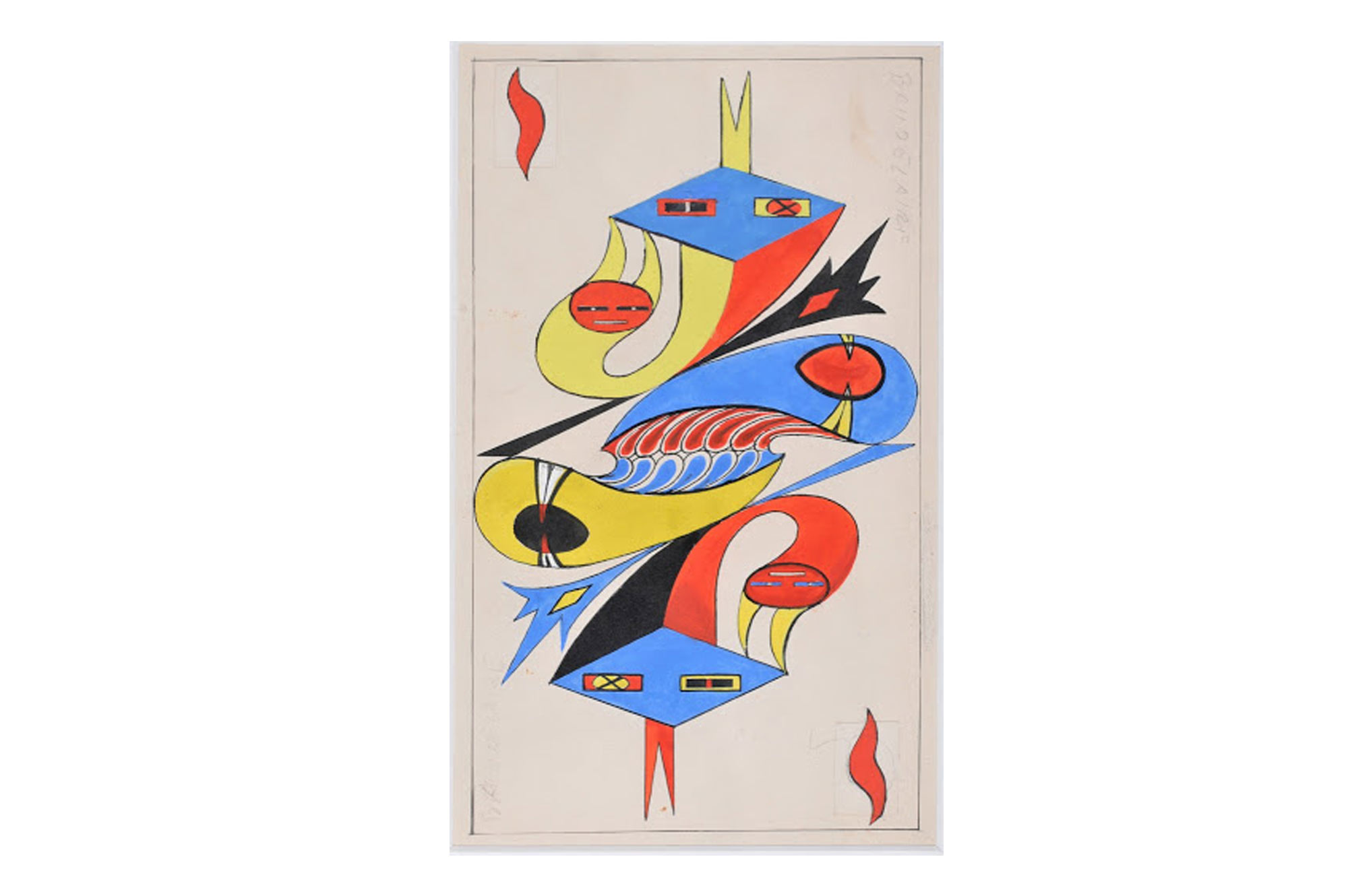Orphaned at a young age, artist Jacqueline Lamba (1910-1993, FR) began life as an independent artist after having studied decorative and fine arts at École de l’Union des Arts Décoratifs. In 1934, Lamba married André Breton. She participated in many Surrealist activities and her paintings appeared in group exhibitions from 1934 to 1948. In 1941, the Nazi invasion of France led the her and Breton into exile in New York. In 1942, she separated from Breton. Lamba’s first solo exhibition was mounted in 1944 at New York City’s Norlyst Gallery. In 1958, she broke away from Surrealism and even destroyed some of her paintings. In 1955, Lamba moved back to France where she lived until her death.
Jeu de Marseille
Among the many works by the artists and writers gathered at Villa Air-Bel, the most outstanding is certainly the Jeu de Marseille – a nod to the famous ‘Tarots de Marseille’, which André Breton was studying at the time. The Surrealists reinvented the iconography of a classical deck of cards in terms of the movement’s favourite figures and symbols. The suits became became the flame of Love (represented by Baudelaire, Stendhal’s Portuguese nun, Novalis), the black star of the Dream (Lautréamont, Lewis Carroll’s Alice, Sigmund Freud), the bloody wheel of the Revolution (Marquis de Sade, Lamiel, Pancho Villa) and the lock of Knowledge (Hegel, Hélène Smith, Paracelsus). A random draw determined who would design the different cards: Victor Brauner (Hegel and Hélène Smith), André Breton (Paracelsus and the Ace of Knowledge), Jacques Hérold (Lamiel and Sade), André Masson (La Religieuse portugaise and Novalis), Max Ernst (Pancho Villa and the Ace of Love), Jacqueline Lamba (Ace of Revolution and Baudelaire), Wifredo Lam (Alice and Lautréamont) and Oscar Dominguez (Freud and the Ace of Dream). The joker was based on Alfred Jarry’s drawing of Father Ubu, while Frédéric Delanglade designed the backs of the cards. Frédéric Delanglade was then tasked with standardising the sketches by redrawing them in a continuous line. In 1943, they were published for the first time in New York in the third issue of Revue WW and then edited in 1983 by André Dimanche.









 Jacqueline Lamba, 'Baudelaire. Génie d'amour - Flamme', 1941, Collection Musée Cantini, Marseille.
Jacqueline Lamba, 'Baudelaire. Génie d'amour - Flamme', 1941, Collection Musée Cantini, Marseille.